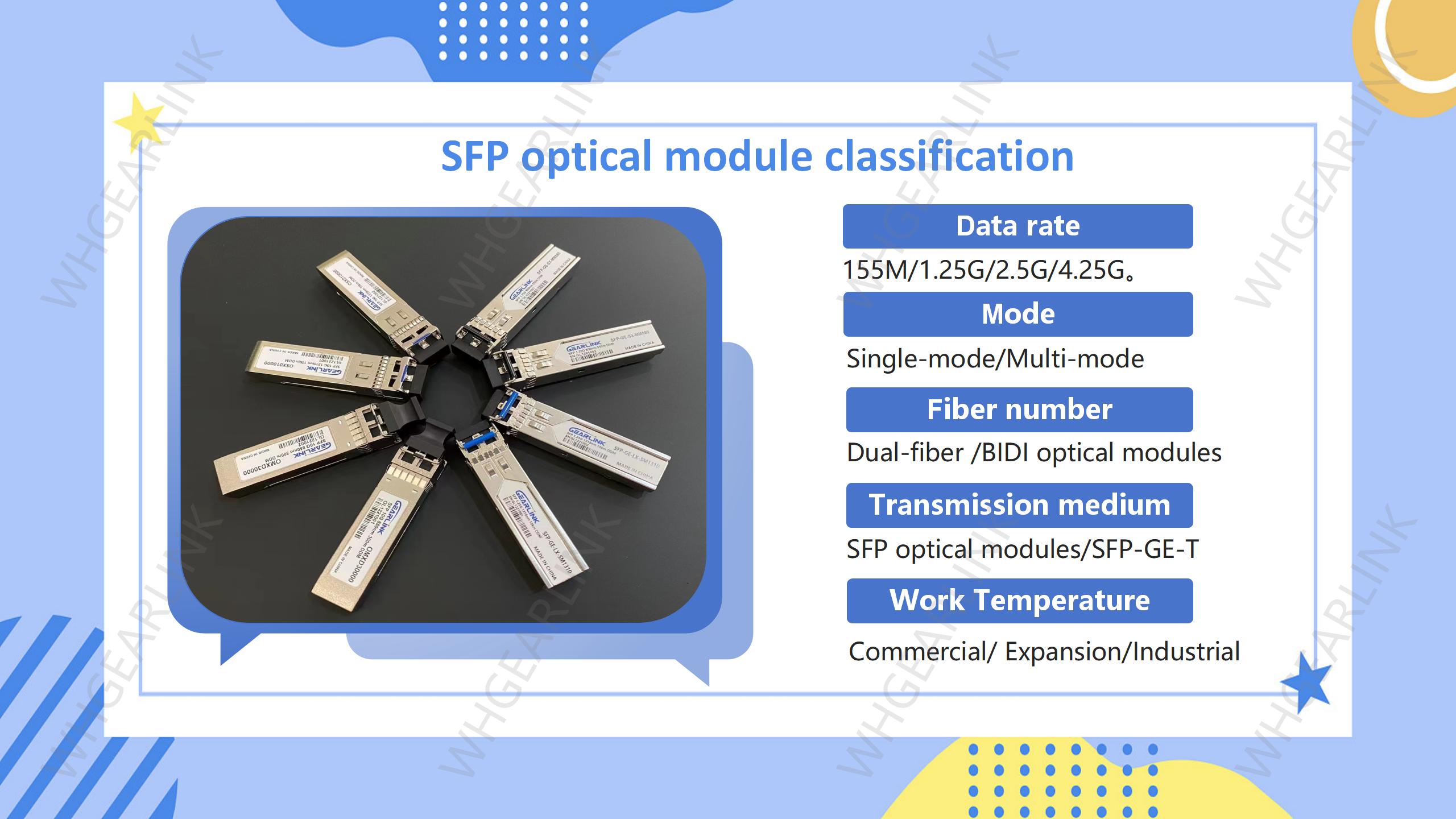
As the most common transceiver in modern optical fiber communications, SFP optical transceivers can be divided into many types according to different characteristics and application scenarios. This article will introduce the classification of SFP optical transceivers in terms of speed, mode, optical fiber, transmission medium and operating temperature.
First of all, according to the rate of SFP optical transceiver, they can be divided into 155M, 1.25gbase, 2.5gbase, and 4.25gbase. Currently, the more common ones are 155M and 1.25gbase.
SFP optical transceivers are classified according to mode and can be divided into single mode and multimode SFP optical transceivers. Multi-mode optical transceivers are suitable for short-distance transmission, generally within 2 kilometers. Single-mode optical transceivers are suitable for long-distance transmission and can cover transmission distances of tens of kilometers or even hundreds of kilometers. In addition, the wavelength division multiplexing optical transceiver is also a type of single-mode optical transceiver. It transmits optical signals of different wavelengths to the same optical fiber to achieve multi-channel transmission and improve the utilization of the optical fiber.
SFP optical transceivers are classified according to the type of optical fiber and can be divided into dual-fiber optical transceivers and BIDI optical transceivers. Dual-fiber optical transceivers use two optical fibers for transmission, one for sending optical signals and the other for receiving optical signals. The BIDI optical transceiver only requires one optical fiber for transmission and realizes bidirectional transmission through different wavelengths, saving optical fiber resources and is suitable for scenarios where optical fiber resources are tight.
SFP optical transceivers are classified according to the transmission medium and can be divided into SFP optical transceivers and SFP-GE-T optical to electrical transceivers. SFP optical transceivers are suitable for optical fiber transmission. The SFP-GE-T optical-to-electrical transceiver converts optical signals into electrical signals for transmission. It is suitable for conversion scenarios between optical fibers and copper cables, and can realize interconnection between different media.
Finally, SFP optical transceivers can be classified according to their operating temperature and can be divided into commercial grade, extended grade and industrial grade optical transceivers. Commercial-grade optical transceivers are suitable for ordinary office environments, and the operating temperature range is generally between 0°C and 70°C. Extended optical transceivers are suitable for some special environments, and the operating temperature range can reach between -20°C and 85°C. Industrial-grade optical transceivers are suitable for harsh environments, and the operating temperature range can reach between -40°C and 85°C.
In practical applications, different types of SFP optical transceivers have their own advantages and applicable scenarios. For example, multi-mode optical transceivers are suitable for short-distance transmission and have relatively low costs, but the transmission distance is limited; while single-mode optical transceivers are suitable for long-distance transmission and high-speed transmission, but the cost is higher. BIDI optics transceivers can save optical fiber resources and are suitable for scenarios with limited optical fiber resources. Optical to electrical transceivers can realize interconnection between different media and provide greater flexibility. Optical transceivers with different operating temperature levels can adapt to the requirements of different environments. Understanding these different types of SFP optical transceivers can help us better choose the optical transceiver that suits our needs and improve the efficiency and reliability of fiber optic communication.
In general, SFP optical transceivers have a variety of classification methods, including mode, optical fiber, transmission medium and operating temperature. Understanding these different classifications can help us better select suitable optical transceivers and provide efficient and reliable optical fiber communication solutions. When selecting optical transceivers, comprehensive considerations need to be made based on specific needs and application scenarios to meet different application needs and technical requirements.

